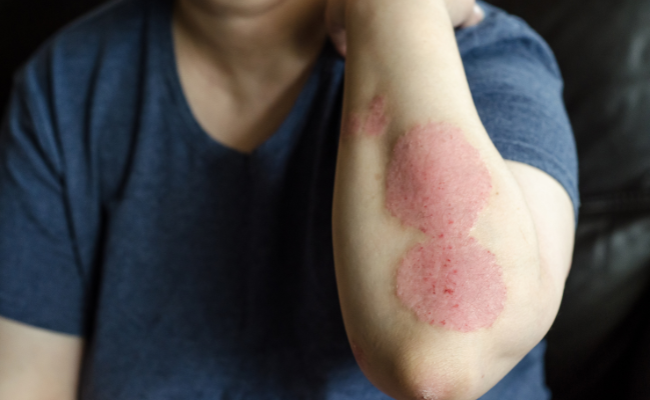How to Treat Churg Strauss Syndrome?
- December 18, 2023
- No Comments

What is Churg-Strauss Syndrome?
Churg-Strauss Syndrome (CSS), or eosinophilic granulomatosis with polyangiitis (EGPA), is a rare autoimmune vasculitis marked by inflammation in small to medium-sized blood vessels. This complex condition primarily targets organs like the lungs, skin, and nerves, presenting a challenging clinical picture. Individuals with CSS often have a history of asthma and/or allergies. The hallmark is elevated eosinophils in both blood and tissues.
While the exact cause is unclear, CSS is an autoimmune disorder where the immune system mistakenly attacks the body's tissues. The inflammation can impact various organs, posing diagnostic and management challenges for healthcare professionals. Treatment aims to suppress the immune response and prevent organ damage, emphasizing an individualized approach to address the diverse nature of this autoimmune vasculitis. Ongoing research is crucial for refining treatment strategies and enhancing outcomes for individuals affected by Churg-Strauss Syndrome.
Why Does Churg-Strauss Syndrome Occur?
The etiology of CSS is multifactorial and not fully understood. It is believed to result from a complex interplay of genetic and environmental factors. In CSS, the immune system becomes hyperactive, producing antibodies that target blood vessels. This immune response triggers inflammation, leading to the infiltration of eosinophils and subsequent damage to various organs. Allergies, particularly to certain medications or environmental factors, may play a role in triggering CSS in susceptible individuals.
How Does Churg-Strauss Syndrome Present Itself?
Churg-Strauss Syndrome exhibits a diverse range of symptoms, making its diagnosis challenging. It often begins with symptoms resembling asthma, allergic rhinitis, sinusitis, and peripheral blood eosinophilia. As the disease progresses, individuals may experience more severe manifestations such as lung involvement (cough, shortness of breath), skin rashes, nerve damage, gastrointestinal issues, and joint pain. The variability in clinical presentation underscores the importance of early detection for initiating timely and effective treatment.
Treatment Solutions for Churg-Strauss Syndrome
Managing Churg-Strauss Syndrome demands a comprehensive and individualized treatment approach due to the variability in its clinical manifestations. The overarching goals are to suppress the overactive immune response, control inflammation, and prevent organ damage. Here are key components of the treatment plan:
- Corticosteroids: Corticosteroids, particularly prednisone, constitute a cornerstone of CSS treatment. They are often prescribed at high doses during active phases of the disease to rapidly reduce inflammation and control symptoms. The dosage is then gradually tapered to the lowest effective dose for maintenance.
- Immunosuppressive Medications: In cases where corticosteroids alone are insufficient or for individuals requiring long-term management, immunosuppressive medications may be introduced. Drugs such as cyclophosphamide or azathioprine are utilized to modulate the immune system and prevent further damage. The choice of medication depends on the severity of the disease and the individual's response.
- Biologic Therapies: Biologic therapies represent a promising frontier in CSS treatment. Medications like mepolizumab or rituximab, which target specific components of the immune system, offer a more focused approach with potentially fewer side effects compared to traditional immunosuppressants. These therapies are particularly considered for cases refractory to conventional treatment.
- Management of Specific Organ Involvement: Tailoring treatment to the specific organs affected is crucial. For lung involvement, bronchodilators or inhaled corticosteroids may be prescribed. Skin rashes may be managed with topical steroids or antihistamines. Nerve involvement may require pain management and physical therapy. This organ-specific approach contributes to a more effective and tailored treatment strategy.
Benefit Points of Treating Churg-Strauss Syndrome
- Disease Control and Symptom Relief: Effective treatment of Churg-Strauss Syndrome aims to achieve disease control, suppressing the overactive immune response and providing relief from symptoms such as asthma, skin rashes, and joint pain. This contributes to an improved overall quality of life for individuals with CSS.
- Prevention of Organ Damage: Timely and appropriate treatment is crucial for preventing organ damage associated with CSS. By modulating the immune response and mitigating inflammation, the risk of complications affecting the lungs, skin, nerves, and other organs can be significantly reduced. This prevention of organ damage enhances the overall prognosis.
- Improved Quality of Life: The comprehensive treatment approach contributes to an improved quality of life for individuals with Churg-Strauss Syndrome. By effectively managing symptoms and controlling the disease, patients can engage more fully in daily activities without the burden of persistent symptoms.
- Reduced Relapse Risk: Maintenance therapy, tailored to the individual's needs, is essential to reduce the risk of disease relapse. This involves ongoing monitoring, adjustment of medications, and regular follow-ups to ensure sustained disease control. Lowering the risk of relapse is critical for long-term management.
- Individualized Approach: Recognizing the variability in CSS presentations, treatment plans are tailored to the unique needs of each patient. Healthcare providers work closely with individuals to adjust medications, address emerging symptoms, and optimize overall care, recognizing the diverse nature of this complex condition. This individualized approach ensures optimal disease management with minimal side effects.
Comments (0)